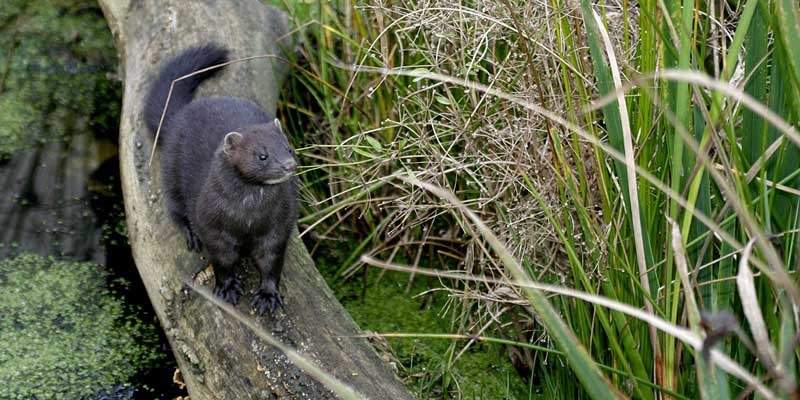North Tayside is a key target area in a near £1 million bid to cull the breeding American mink before it can do irrevocable damage to the native wildlife.
The invasive predator has spread out through waterways across the north of Scotland, with its population now estimated at more than 20,000.
In doing so, the carnivore is increasingly posing what is considered an unpalatable threat to water voles, ground nesting birds and economically important populations of salmon and game birds.
As a result, a Scottish Mink Initiative has been set up to oversee a controlled culling of the animal, with trapping and extermination set to take place across large parts of the north.
Although it can be difficult to track the nocturnal animals, a number of hot spot areas have been identified, with high populations of American mink on the Ericht and Isla Rivers and the Angus Glens making Blairgowrie a strategic area for trapping.
Reports of mink sightings from keen conservationists indicate Aberfeldy to the west is also an area of concern.
Organisers say that the mink will be caught in humane traps before being dispatched with a single shot to the head a method they believe will cause the least suffering.
While the move is likely to prove controversial there was significant opposition earlier this year to the announcement that feral beavers in Tayside were to be recaptured those behind the plan insist it is needed. Capturing and then releasing the mink would only transfer the problem elsewhere.
The American mink became established in the wild in the UK in the 1950s, following escapes and releases from fur farms. Their descendants have since spread throughout the country and have even been discovered on the Western Isles.
The Scottish Mink Initiative has been set up by a partnership including the Rivers and Fisheries Trusts of Scotland (RAFTS), the Scottish Wildlife Trust, Scottish Natural Heritage (SNH), Aberdeen University and 16 other organisations.
Together they aim to target the mink and remove its presence from 20,000 square kilometres of Scottish countryside, from rural north Tayside, across Aberdeenshire, Moray, the Cairngorms National Park and the Highlands.
The initiative says it hopes to protect native wildlife as well as economic stability and signals a £920,000 investment in native wildlife conservation.
Support has come from the Cairngorms National Park Authority, Highland, Moray, Rural Aberdeenshire and Rural Tayside LEADER 2003-2007 Programmes and SNH.
Ann-Marie MacMaster, the Scottish Mink Initiative North Tayside mink control officer, said, “Previous research indicates there is a healthy population of breeding American mink in the lower and middle Tay catchment.
“Through their dispersal and subsequent re-invasion, American mink pose a significant threat to healthy water vole populations in the head waters of the Tay.
“By working strategically with the community, I hope to set up a volunteer network to monitor mink movements using mink rafts and establish an alert system to help us prevent further spread of the species.
“While animal control will be necessary, animal welfare considerations will be paramount to our operations.”
Hollie Walker, the Scottish Mink Initiative co-ordinator, said, “This initiative is as much about ensuring economic security for local communities as it is about protecting Scotland’s wildlife.
“By taking action now to prevent mink from continuing to impact negatively on our native wildlife, we are also safeguarding local economies and livelihoods which depend on angling, shooting, or wildlife tourism.
“The success of this initiative relies on community support and involvement and we hope that by working with landowners we can deliver real, tangible results to benefit local communities now and in the future.”
There have been previous mink control projects in the Cairngorms National Park and north east Scotland.More information is available from www.rafts.org.ukPhoto Darin Smith
